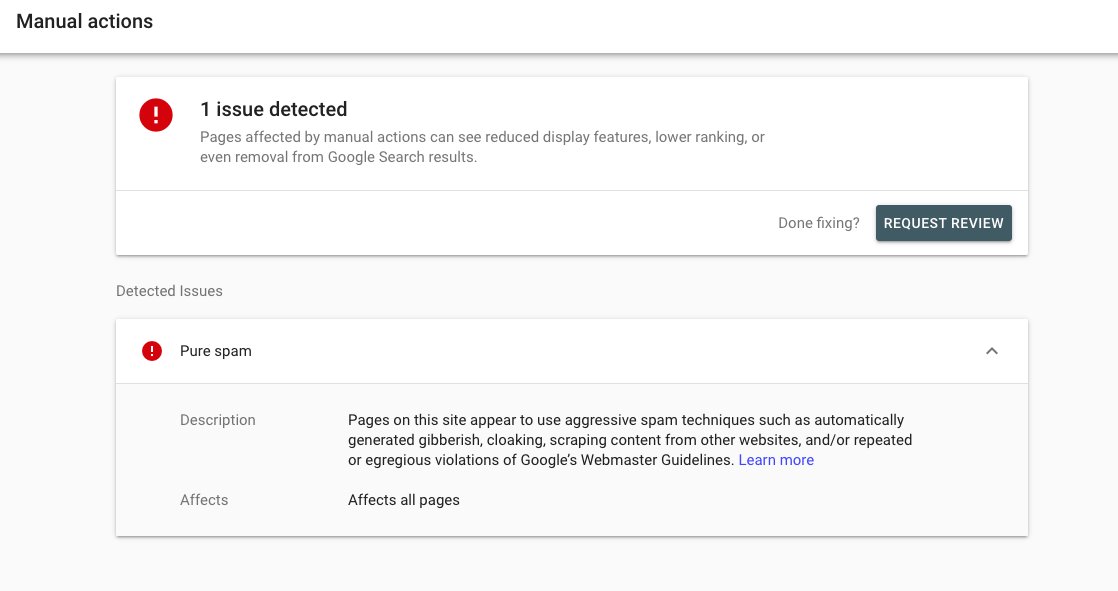Any site hit with a link penalty from Google knows you have to go through a process of removing the penalty. In some cases, you have to do a complete reconsideration request to be included in the Google index again.
What is a Link Detox?
For any marketers unfamiliar with a link penalty, it occurs when a domain is guilty of building suspicious links. These links are typically automated, unnatural or follow some other black hat SEO strategy in an attempt to game results in Google. While it can work temporarily, unnatural links are used more for churn and burn websites with no intention of sticking around for a while. While this works for affiliate marketers who build and rebuild sites frequently, it’s rough territory for real brands who rely on their brand and site to drive business.
Major Retailer Guilty of Black Hat Link Building
If you can recall, one of the most infamous link penalty stories came from the US-based shopping mall retailer J.C. Penney back in 2011. Featured in the New York Times, J.C. Penney was discovered to be building unnatural links to its inner pages from spammy websites. While it worked in the short-term for the company and they received unbelievable rankings that drove unheard of revenues at the time, Google quickly handed them a link penalty. This penalty landed the retailer’s site in Google’s sand box where it is difficult to return to great rankings.
In the case of J.C. Penney, they had to perform a complete link detox to lift themselves out of the penalty box. It’s a complicated task and can take months before Google deems you worthy of being included in search results again. For small businesses who jumped on link building schemes when they were popular, it’s even more difficult for Google to give credit again. For this reason, businesses hire an SEO consultant to perform a link detox and try to re-include sites into search results again.
How to Clean Up Backlinks
Google Search Console
First and foremost, webmasters need to have an installation of Google Search Console for their site. This is where Google will let you know if you are hit with a link penalty. The snippet of Javascript needs to be installed in the header tag of all pages of a site for Google to properly assess the information. Once installed, marketers have a dashboard of organic (SEO) data including notice of penalty.
Ahrefs
Next, you’ll want to dig into the locations of the spammy backlinks with a link analysis tool like Ahrefs. Conversely, you may use SEMRush or another tool that allows you to see the links pointing to your site. In most cases, you’ll be able to distinguish between the real links pointing to your site versus anything created as part of a black hat strategy. If you have hired an SEO company in the past (prior to ~2012), there’s a good chance they built spammy links to your site. It was the practice back then and worked well, but it needs to be cleaned up for today’s standards. Compile a list of the questionable links (their domains will work fine) in a spreadsheet.
Disavow Tool
Google offers a link disavow tool to inform Google of spammy backlinks you wish to ignore. While some SEOs in the industry are questioning the validity of Google’s Disavow tool, it’s not a bad idea to still use to try to persuade Google to not credit the bad links. Using the spreadsheet of domains you compiled in the last step, input each domain into the disavow tool. You do not need to put in specific pages / URLs, the domain works just fine.
This is the best way to request that Google ignores the spammy links pointing to your site. However, it is not fail proof.
Outreach
I also recommend reaching out to the webmasters of the spammy sites linking to yours. It’s common for the webmaster to not even be aware of the spammy outbound links and they are surprisingly helpful in cleaning up the links. To determine who to reach out to, you will need to look for an email address on the site or for the more advanced SEOs, use the domain’s whois information.
Reconsideration Request
If your domain is completely removed from Google search results, you’ll need to go through a reconsideration request. Reconsideration requests are evaluated by real people at Google who will determine if your site is worthy to be included in results. Plan to write a lengthy request explaining what you have done to clean up the URL and how it’s not longer impacted by unnatural links. It also helps to indicate you are no longer working with an SEO agency and add a bit about knowing about black hat SEO techniques. You are ultimately apologizing for the behavior of the domain and you want to be in Google’s good graces again.
Following this process will get a site re-included in search results 9/10. Be sure you get rid of all unnatural links through the disavow tool and avoid link building schemes in the future.
What Happens If It Doesn’t Work?
Unfortunately, I’ve seen cases where Google will not re-include a site no matter what. A link detox is completed, spammy links disavowed and a reconsideration request filed, yet Google continues to ignore the site. In the meantime, the business operating behind the site struggles. When this is the case and there is no pleasing Google, it’s time to try a new domain altogether. I would recommend choosing a domain that is close to your branding (business cards, print ads, direct mailers, etc.), but something new enough that you can start fresh with Google. Again, avoid link schemes with the new domain to keep it clean and in Google’s good graces.
If you’re working through a link penalty from Google, be sure you consult with an SEO to get things sorted. It’s a bit of a process to get it right and takes the right expert to have the penalty lifted. Of course, feel free to reach out to me at jeff@octivdigital.com if you have any questions.



